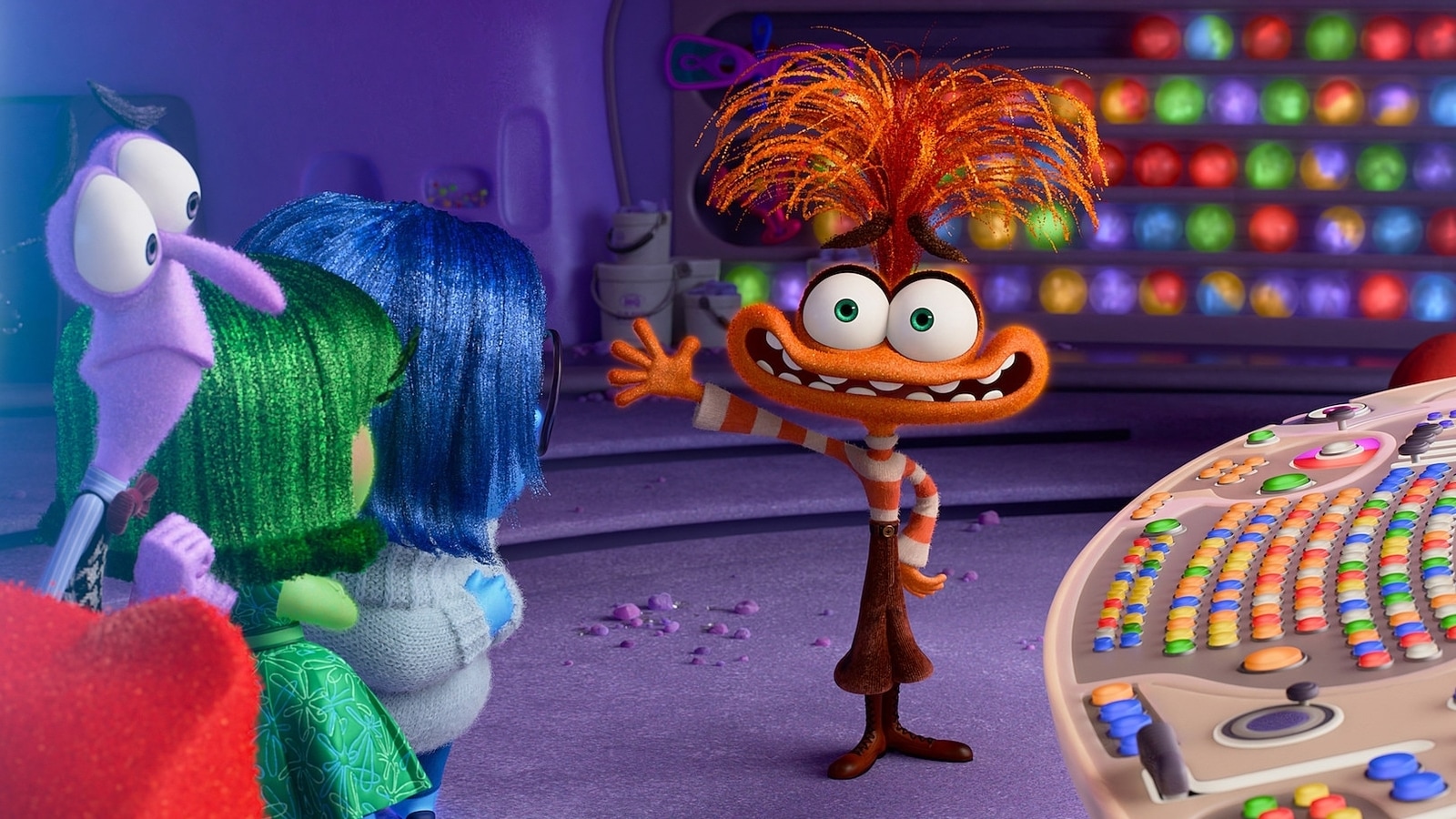Pixar’s Inside Out returns this summer with a hit sequel that explores the core emotions of joy, sadness, disgust, fear, and anger inside 13-year-old Riley’s mind, Headquartered. These emotions work together to influence Riley’s behavior and help her become the best girl she can be. The sequel picks up from the first part, when Riley is all set to enter her teens. During this time, the emotions face the unfamiliar challenge of ‘puberty.’
Inside Out 2 begins with Riley’s puberty, which brings new emotions: anxiety, jealousy, boredom and embarrassment. These new emotions creep in, shaking and shocking the core emotions. Anxiety, voiced by Maya Hawke, takes control of the command center, wreaking havoc and pushing the core emotions to the back of the mind, where they risk being forgotten. Despite Anxiety damaging Riley’s sense of faith and morals, it is not a villain but a troubled anti-hero with savior syndrome, driven by a misplaced sense of needing to protect Riley. Like anxiety, our anxieties, though disruptive, ultimately arise from a desire to keep us safe.
(Be careful, this content contains spoilers, read at your own risk!)
antagonist
Anxiety was the new boss of Mind HQ, taking unprecedented and total control over everything. Anxiety wasn’t the villain it first seemed to be, it was protecting Riley, just like Joy’s main emotion was in her own way in the prequel. With the start of a three-day hockey camp and the news that her friends were going to a different high school, a storm of insecurity rose within Riley.
Determined to save Riley from a lonely future, Anxiety took drastic measures. This included abandoning Riley’s old friends and stealing from the coach’s record book to impress the popular girls. The bulging-eyed, big-toothed orange spirit shattered Riley’s “good girl” self-image that had been painstakingly built up by the original emotions over the years. Worried about the future, Anxiety planned every possible scenario, such as what would happen in Riley’s big match, so much so that she gave up sleep to practice all night. However, Anxiety’s actions backfired and created an even more faltering self-belief in Riley, “I’m not good enough.” Essentially, Anxiety is an antihero, guided with Riley’s best interests in mind, but resorting to questionable means to achieve them.
Likewise, it happens to all of us, where we act unconsciously, without thinking, to protect ourselves from some potential future threat. This new feeling was relatable to die-hard Inside Out fans, resonating with a familiar voice in their heads. Anxiety, with its frenzied planning and overthought-out fears, became a mirror that reflects the internal battles we all face.
Also read: Inside Out 2 rocks the US box office, setting new records by earning millions in its second week of release
How Pixar handled anxiety attacks the right way
As anxiety tries to take over Riley, everything spirals out of control. In the final hockey match, a penalty sends Riley into a full-blown anxiety attack. Anxiety unleashes an orange storm in the command center, frozen in hysteria and helpless. The climax was emotionally difficult to watch, leaving audiences crying in theaters. And for a children’s movie, the anxiety attack felt very real.
It was a chilling portrayal of the dizziness, sweating, and chest tightness that grips us during such moments. Riley sat down during an anxiety attack, it’s important to ground yourself, as the head starts spinning. She was sweating, she grabbed her chest with trembling hands to control her beating heart. Psychological fear can manifest in physical symptoms, making the beating heart feel painful, almost like a heart attack. Riley’s uncontrollable eyes touching her face, along with subtle facial twitching, were so terrifyingly vivid. It’s a subconscious way to calm down overwhelming anxiety. Riley’s recovery was on point, as she tested her physical senses. Anxiety attacks block all of our senses, so when Riley calms down, she touches the bench, listens to the sound of the puck, and focuses on breathing deeply. All the subtle details make the film emotionally rich. There was a sense of déjà vu in the third act, something very raw and real.
During the attack, inside her mind, Anxiety was paralyzing, shedding tears of helplessness, saying, “I was just trying to protect Riley.” Likewise, we all try to protect our inner child in whatever way we can. Rooted in vulnerability, the film delivered a powerful message of learning to live with our anxieties. Unlike its prequel, it didn’t have a happy resolution with Anxiety being kicked out of HQ, but Riley and Joey understood and accepted all emotions, even the uncomfortable ones.
